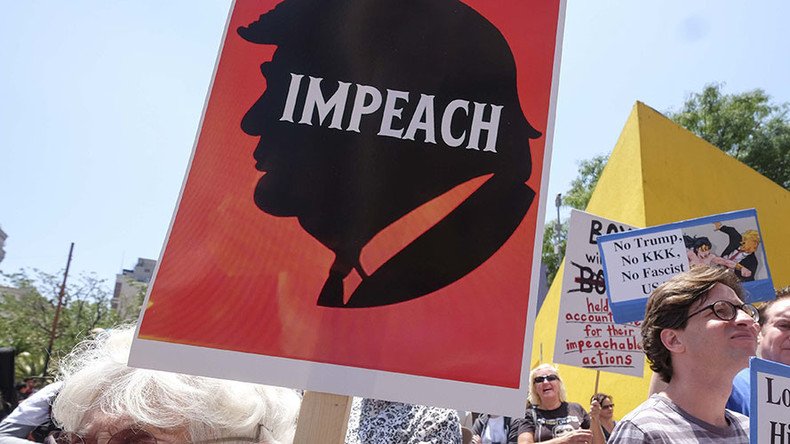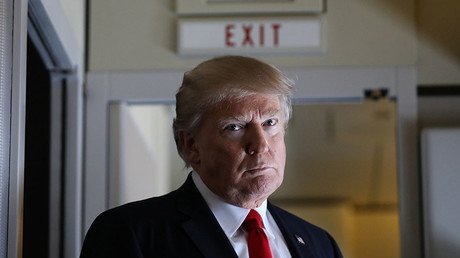‘For high crimes and misdemeanors’: Dem Congressman submits resolution to impeach Trump

Representative Brad Sherman (D-California) has introduced a resolution to impeach President Donald Trump for “high crimes and misdemeanors,” including obstruction of justice over the president’s firing of former FBI Director James Comey.
The initiative, submitted to the House of Representatives, claims the president has “prevented, obstructed and impeded” a federal investigation into his former national security advisor, Michael Flynn.
Trump “sought to use his authority to hinder and cause the termination of such investigation(s) including through threatening then terminating James Comey who was until such termination the Director of the Federal Bureau of Investigation,” reads the proposed resolution.
In May, Trump abruptly fired Comey as the FBI director was leading an investigation into potential collusion between Trump’s aides and the Russian government during the 2016 presidential race.
A month later, Comey testified in Congress on the conversations he had with the president, which he said led him to believe that Trump asked him to stop looking into Flynn.
“I hope you can see your way clear to letting this go, to letting Flynn go. He is a good guy,” Comey remembered Trump saying, according to Comey’s written notes of their meeting.
The conversation took place on February 14, according to Comey’s memos ‒ the day after Flynn was fired over misleading Vice President Mike Pence about contacts he had with Russia’s ambassador to the US, Sergey Kislyak.
However, when asked during the June Congressional hearing if Trump “at any time” asked him “to stop the FBI investigation into Russian involvement in the 2016 US elections,” Comey replied: “Not to my understanding, no.”
Even though many Democrats have accused Trump of obstruction of justice, party leaders seemed reluctant to formally back an initiative to impeach him when the calls first came in May.
Currently, the only co-sponsor on Sherman’s proposed House resolution is Representative Al Green (D-Texas).
Green was the first Congressman to call for Trump’s impeachment from the House floor in May.
“President Trump is not above the law. He has committed an impeachable act and must be charged,” Green said in a statement.
“Our mantra should be ‘I.T.N. – Impeach Trump Now,’” he said.
Impeachment is a three-part process outlined in the Constitution. It begins in the House of Representatives, where a simple majority can vote to impeach a federal official for "treason, bribery, or other high crimes and misdemeanors."
The definition is vague and has long been debated. In 1970, then-House Minority Leader Gerald Ford defined an impeachable offense as “whatever a majority of the House of Representatives considers it to be at a given moment in history."
Once the House has voted to impeach, the issue heads to the Senate, which holds a trial. If the official in question is the president, then the chief justice of the US Supreme Court is the presiding judge, otherwise it is the vice president in his role as president of the Senate. The Senate needs a two-thirds majority, or 67 out of 100 votes, to find an official guilty and remove that person from office.
Only two presidents ‒ Andrew Johnson in 1868 and Bill Clinton in 1999 ‒ have ever been impeached by the House, both of which history has judged to be highly partisan proceedings. Neither was convicted by the requisite two-thirds majority in the Senate. President Richard Nixon resigned in 1974, rather than go through an impeachment vote in the House.














